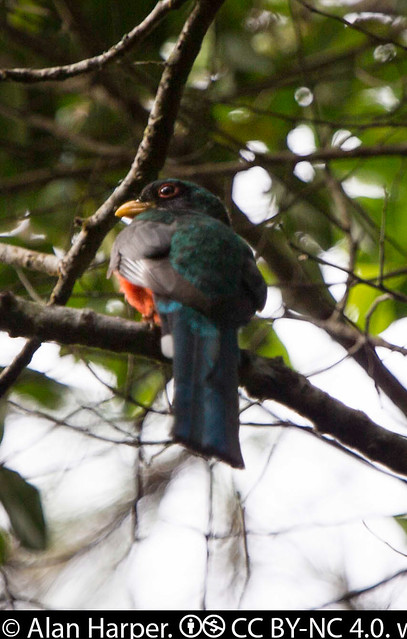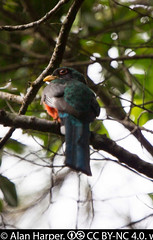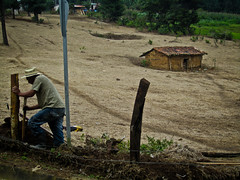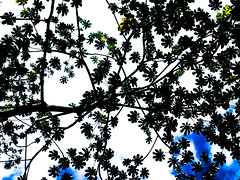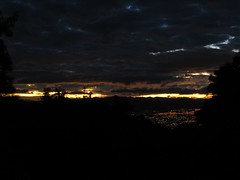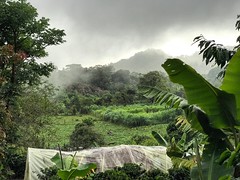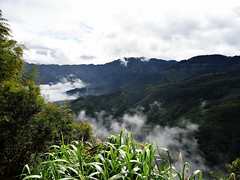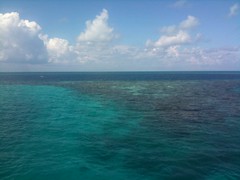 Honduras
Honduras
Honduras, officially the Republic of Honduras, is a country in Central America. The republic of Honduras is bordered to the west by Guatemala, to the southwest by El Salvador, to the southeast by Nicaragua, to the south by the Pacific Ocean at the Gulf of Fonseca, and to the north by the Gulf of Honduras, a large inlet of the Caribbean Sea. Its capital and largest city is Tegucigalpa.
Honduras was home to several important Mesoamerican cultures, most notably the Maya, before the Spanish colonization in the sixteenth century. The Spanish introduced Catholicism and the now predominant Spanish language, along with numerous customs that have blended with the indigenous culture. Honduras became independent in 1821 and has since been a republic, although it has consistently endured much social strife and political instability, and remains one of the poorest countries in the Western Hemisphere. In 1960, the northern part of what was the Mosquito Coast was transferred from Nicaragua to Honduras by the International Court of Justice.
The nation's economy is primarily agricultural, making it especially vulnerable to natural disasters such as Hurricane Mitch in 1998. The lower class is primarily agriculturally based while wealth is concentrated in the country's urban centers. Honduras has a Human Development Index of 0.625, classifying it as a nation with medium development. When adjusted for income inequality, its Inequality-adjusted Human Development Index is 0.443.
Honduran society is predominantly Mestizo; however, there are also significant American Indian, black and white communities in Honduras. The nation had a relatively high political stability until its 2009 coup and again with the 2017 presidential election.
Honduras spans about and has a population exceeding million. Its northern portions are part of the western Caribbean zone, as reflected in the area's demographics and culture. Honduras is known for its rich natural resources, including minerals, coffee, tropical fruit, and sugar cane, as well as for its growing textiles industry, which serves the international market.
Etymology
The literal meaning of the term "Honduras" is "depths" in Spanish. The name could either refer to the bay of Trujillo as an anchorage, fondura in the Leonese dialect of Spain, or to Columbus's alleged quote that "Gracias a Dios que hemos salido de esas honduras" ("Thank God we have departed from those depths").Davidson traces it to Herrera.
It was not until the end of the 16th century that Honduras was used for the whole province. Prior to 1580, Honduras referred to only the eastern part of the province, and Higueras referred to the western part. Another early name is Guaymuras, revived as the name for the political dialogue in 2009 that took place in Honduras as opposed to Costa Rica.
Hondurans are often referred to as Catracho or Catracha (fem) in Spanish.
History
Pre-colonial period
In the pre-Columbian era, modern Honduras was split between two pan-cultural regions: Mesoamerica in the west and the Isthmo-Colombian area in the east. Each complex had a "core area" within Honduras (the Sula Valley for Mesoamerica, and La Mosquitia for the Isthmo-Colombian area), and the intervening area was one of gradual transition. However, these concepts had no meaning in the Pre-Columbian era itself and represent extremely diverse areas. The Lenca people of the interior highlands are also generally considered to be culturally Mesoamerican, though the extent of linkage with other areas varied over time (for example, expanding during the zenith of the Toltec Empire).
In the extreme west, Maya civilization flourished for hundreds of years. The dominant, best known, and best studied state within Honduras's borders was in Copán, which was located in a mainly non-Maya area, or on the frontier between Maya and non-Maya areas. Copán declined with other Lowland centres during the conflagrations of the Terminal Classic in the 9th century. The Maya of this civilization survive in western Honduras as the Ch'orti', isolated from their Choltian linguistic peers to the west.
However, Copán represents only a fraction of Honduran pre-Columbian history. Remnants of other civilizations are found throughout the country. Archaeologists have studied sites such as and La Sierra in the Naco Valley, Los Naranjos on Lake Yojoa, Yarumela in the Comayagua Valley, La Ceiba and Salitron Viejo (both now under the Cajón Dam reservoir), Selin Farm and Cuyamel in the Aguan valley, Cerro Palenque, Travesia, Curruste, Ticamaya, Despoloncal, and Playa de los Muertos in the lower Ulúa River valley, and many others.
In 2012, LiDAR scanning revealed that several previously unknown high density settlements existed in La Mosquitia, corresponding to the legend of "La Ciudad Blanca". Excavation and study has since improved knowledge of the region's history. It is estimated that these settlements reached their zenith from 500 to 1000 AD.
Spanish conquest (1524–1539)
On his fourth and the final voyage to the New World in 1502, Christopher Columbus landed near the modern town of Trujillo, near Guaimoreto Lagoon, becoming the first European to visit the Bay Islands on the coast of Honduras. On 30 July 1502, Columbus sent his brother Bartholomew to explore the islands and Bartholomew encountered a Mayan trading vessel from Yucatán, carrying well-dressed Maya and a rich cargo. Bartholomew's men stole the cargo they wanted and kidnapped the ship's elderly captain to serve as an interpreter in the first recorded encounter between the Spanish and the Maya.
In March 1524, Gil González Dávila became the first Spaniard to enter Honduras as a conquistador. followed by Hernán Cortés, who had brought forces down from Mexico. Much of the conquest took place in the following two decades, first by groups loyal to Cristóbal de Olid, and then by those loyal to Francisco de Montejo but most particularly by those following Alvarado. In addition to Spanish resources, the conquerors relied heavily on armed forces from Mexico—Tlaxcalans and Mexica armies of thousands who remained garrisoned in the region.
Resistance to conquest was led in particular by Lempira. Many regions in the north of Honduras never fell to the Spanish, notably the Miskito Kingdom. After the Spanish conquest, Honduras became part of Spain's vast empire in the New World within the Kingdom of Guatemala. Trujillo and Gracias were the first city-capitals. The Spanish ruled the region for approximately three centuries.
Spanish Honduras (1524–1821)
Honduras was organized as a province of the Kingdom of Guatemala and the capital was fixed, first at Trujillo on the Atlantic coast, and later at Comayagua, and finally at Tegucigalpa in the central part of the country.
Silver mining was a key factor in the Spanish conquest and settlement of Honduras. Initially the mines were worked by local people through the encomienda system, but as disease and resistance made this option less available, slaves from other parts of Central America were brought in. When local slave trading stopped at the end of the sixteenth century, African slaves, mostly from Angola, were imported. After about 1650, very few slaves or other outside workers arrived in Honduras.
Although the Spanish conquered the southern or Pacific portion of Honduras fairly quickly, they were less successful on the northern, or Atlantic side. They managed to found a few towns along the coast, at Puerto Caballos and Trujillo in particular, but failed to conquer the eastern portion of the region and many pockets of independent indigenous people as well. The Miskito Kingdom in the northeast was particularly effective at resisting conquest. The Miskito Kingdom found support from northern European privateers, pirates and especially the British formerly English colony of Jamaica, which placed much of the area under its protection after 1740.
Independence (1821)
Honduras gained independence from Spain in 1821 and was a part of the First Mexican Empire until 1823, when it became part of the United Provinces of Central America. It has been an independent republic and has held regular elections since 1838. In the 1840s and 1850s Honduras participated in several failed attempts at Central American unity, such as the Confederation of Central America (1842–1845), the covenant of Guatemala (1842), the Diet of Sonsonate (1846), the Diet of Nacaome (1847) and National Representation in Central America (1849–1852). Although Honduras eventually adopted the name Republic of Honduras, the unionist ideal never waned, and Honduras was one of the Central American countries that pushed the hardest for a policy of regional unity.
Policies favoring international trade and investment began in the 1870s, and soon foreign interests became involved, first in shipping from the north coast, especially tropical fruit and most notably bananas, and then in building railroads. In 1888, a projected railroad line from the Caribbean coast to the capital, Tegucigalpa, ran out of money when it reached San Pedro Sula. As a result, San Pedro grew into the nation's primary industrial center and second-largest city. Comayagua was the capital of Honduras until 1880, when the capital moved to Tegucigalpa.
Since independence, nearly 300 small internal rebellions and civil wars have occurred in the country, including some changes of régime.
20th century and the role of American companies
In the late nineteenth century, Honduras granted land and substantial exemptions to several US-based fruit and infrastructure companies in return for developing the country's northern regions. Thousands of workers came to the north coast as a result to work in banana plantations and other businesses that grew up around the export industry. Banana-exporting companies, dominated until 1930 by the Cuyamel Fruit Company, as well as the United Fruit Company, and Standard Fruit Company, built an enclave economy in northern Honduras, controlling infrastructure and creating self-sufficient, ta…
Looking for places related to Honduras?
Those are other destinations to find places related to Honduras:
